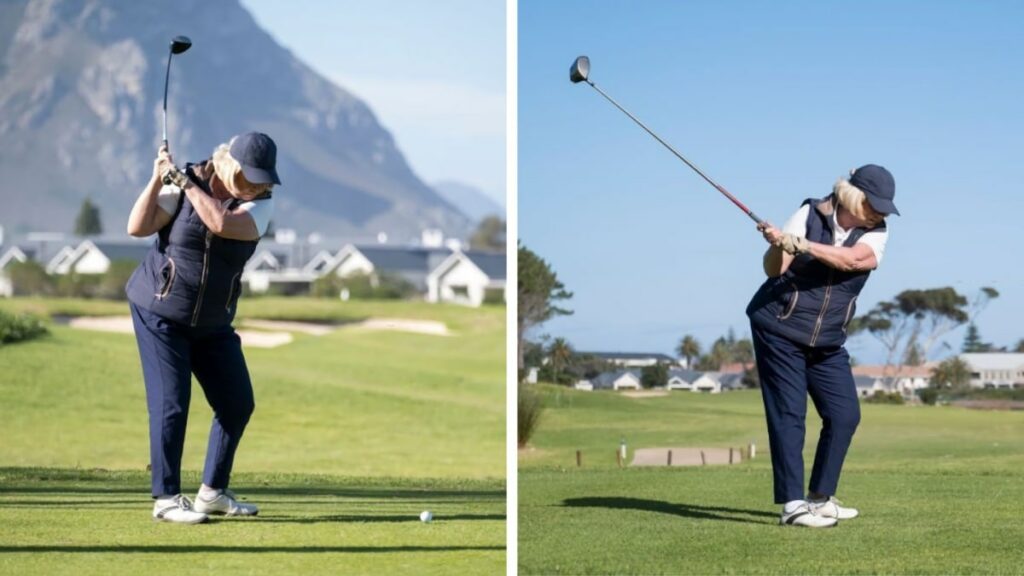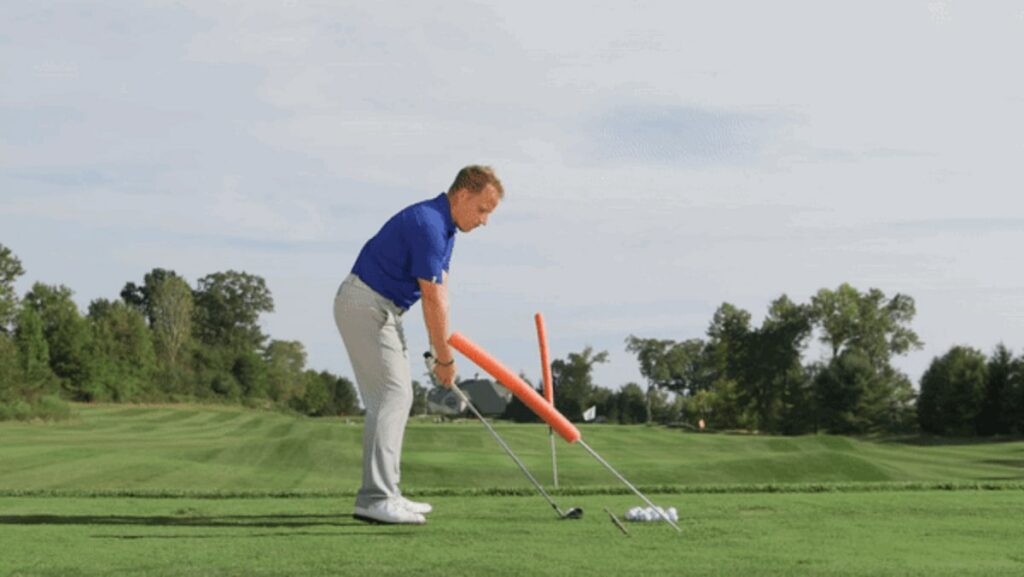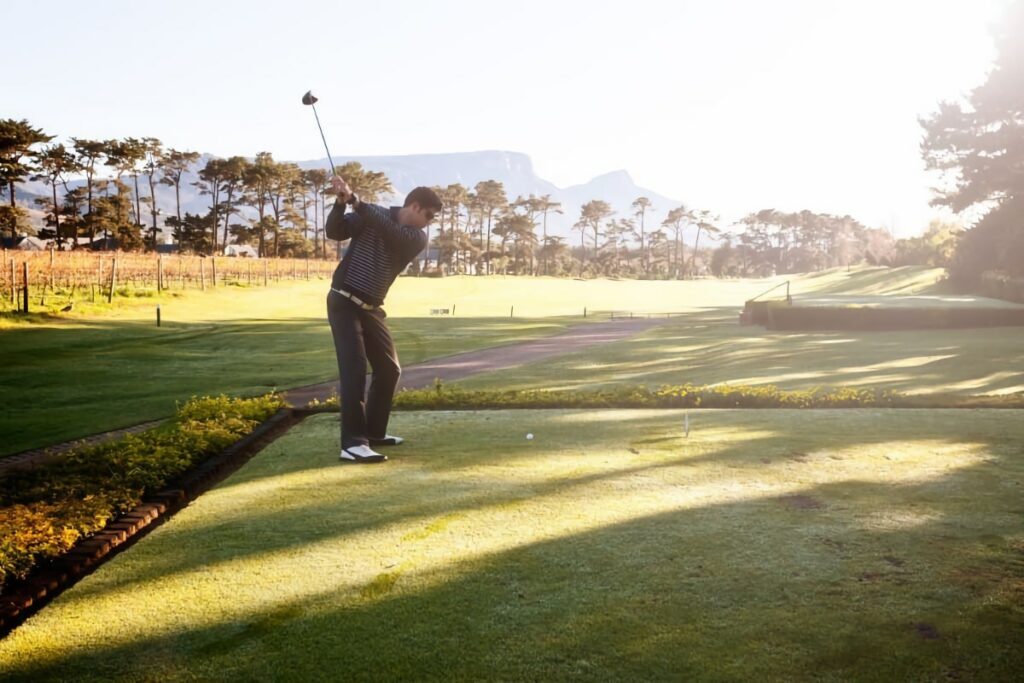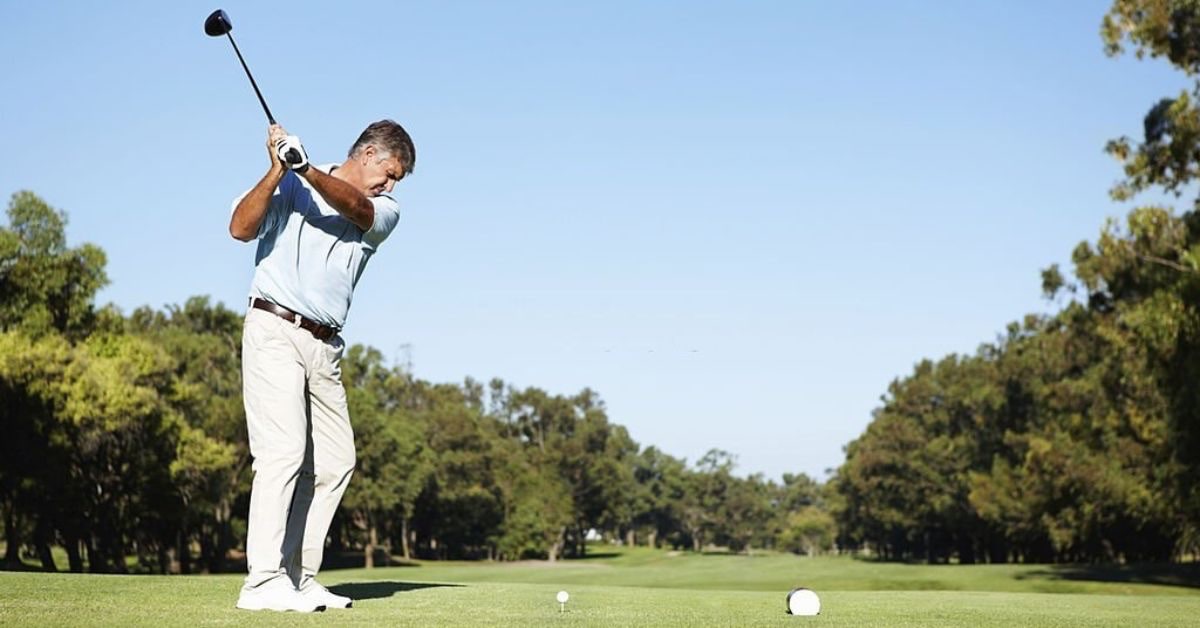The swing plane is a highly misunderstood concept in golf.
As you improve in this game, you’ll quickly realize that the swing plane happens as a direct result of the mechanics and dynamics of your swing.
When I was younger, my driver swing plane was too steep. This caused a lack of consistency with my tee shots, often going right and excessively high.
Fortunately, I’ve fixed the problem! The driver is now a reliable club in my bag.
In this article, I’ll show you what I learned about the correct driver swing plane and how you can improve your tee shots with some subtle changes.
So without hesitation, let’s dive into it!
What Is Driver Swing Plane?
Driver swing plane is the vertical angle between the ground and the direction the club head travels during the golf swing. In short, swinging a driver on the proper swing plane will help you hit your tee shots with more accuracy and consistency.

Why Is Swing Plane Important?
The swing plane is an important element of the golf swing as it has a direct impact on ball direction, launch angle, and the quality of strike.
Let’s dive into each of these variables in a bit more detail.
The Direction of Your Shot
An area where many everyday golfers struggle is accuracy off the tee.
You might be intrigued to hear that your driver swing plane has a huge influence on the direction of your tee shots — and your ability to find fairways.
With a swing plane that’s too steep or shallow, you’ll often lack accuracy.
Firstly, if your driver swing plane is too steep, you can be prone to pulling tee shots left. Also, a steep swing can result in nasty slices with minimal control.
Conversely, an excessively shallow driver swing plane can cause a push or a hook shot — depending on the angle of the clubface at impact.

The Launch Angle
The vertical direction the clubhead moves as it approaches the ball at impact has a large influence on how far and high the ball travels.
When hitting a driver, you should aim to have the ball toward the front of your stance to encourage an upward angle of attack.
If your driver swing plane is excessively steep or shallow, the clubface is more likely to strike the ball at an improper vertical angle.
Essentially, this can result in tee shots launching too high — or too low.
PRO TIP: There isn’t a perfect swing plane angle, since it varies according the the length of your club and your natural swing posture. Simply aim to keep it neutral — not too steep, and not too shallow.
The Quality of Strike
Finally, your swing plane has a bearing on the quality of the strike at impact.
When the driver swing plane is too steep or shallow, it often requires some correction in the downswing to deliver the clubface square to the ball.
In effect, this can make it challenging to find the center of the clubface on a consistent basis — since there are lots of moving parts.
By focusing on maintaining a neutral swing plane, you’ll make it easier to locate the sweet spot. This will do wonders for your distance and accuracy!

How to Master the Driver Swing Plane
When I first recognized my swing plane issues, it took some time to diagnose the problems and begin delivering the club on the right plane.
Here are some quick tips to help you achieve the proper driver swing plane.
1. Check Your Setup
When you set up to hit a tee shot with your driver, think about a piece of sheetrock or plywood resting on your golf club shaft. This is your swing plane.
If your posture is incorrect and the club swing plane is sitting too low or high at address, it will throw off the swing plane for the rest of your swing.
The sole of the driver head should sit fairly flat behind the ball at address, with your hands in a comfortable position below your eyes.
PRO TIP: Make sure your driver length and lie angle is correctly fitted to your height and natural posture.
2. Capture a Video
Another useful tip is to record a quick video of your swing from down the line.
This angle will allow you to see your swing plane and how it changes throughout the motion of your swing. Play the video back in slow motion and analyze!
In addition, you can also download a golf swing analyzer that will overlay a line on your swing plane for instant feedback.
3. Consider Training Aids
Many golfers struggle with a driver swing plane that is excessively steep.
One of the best ways to fix this is to use an alignment stick. Setup alignment sticks on an angle in the ground that represents your ideal swing plane.
Then, take some swings where you stay below this angle on the backswing. If you do this on the backswing, you should be able to repeat it on the downswing.

4. Understand Your Ball Flight
If you want to make the right adjustments to your swing plane, you have to know whether you need a more shallow or steep driver swing plane.
If you mostly hit shots that pop straight up, move right with a slice, or seem to lack power and distance — your swing plane is likely too steep.
On the other hand, if your tee shots typically result in hooks or have very low ball trajectory — your swing plane is probably too shallow.
By understanding how swing path can influence ball flight off the tee, you’ll be able to diagnose any problems to help get it back on plane.

Driver Swing Plane vs Iron Swing Plane
While you should aim to keep your swing plane fairly neutral across all the clubs in your bag, there are some subtle differences between the driver and irons.
Remember, the driver is considerably longer than every iron in your bag. This extra length in the shaft will slightly alter the optimal swing plane.
The driver swing plane should be a bit more shallow than the iron swing plane.
With the driver, you’ll naturally be stood further away from the ball. As a result, this shallows out the swing plane in order to deliver the clubface square to the ball.
Check out the video below by Rick Shiels, where he demonstrates the key differences between the driver swing and the iron swing:
Final Thoughts
In summary, I recommend you focus initially on your setup and posture. Once these are nailed down, then analyze how your swing plane derives from that.
Some golfers play with steep or shallow driver swings — and they make it work!
“Swing your swing.”
Arnold Palmer
Nevertheless, the closer you can get to having a more neutral driver swing plane, the easier it will be to hit accurate and repeatable tee shots on the course.


